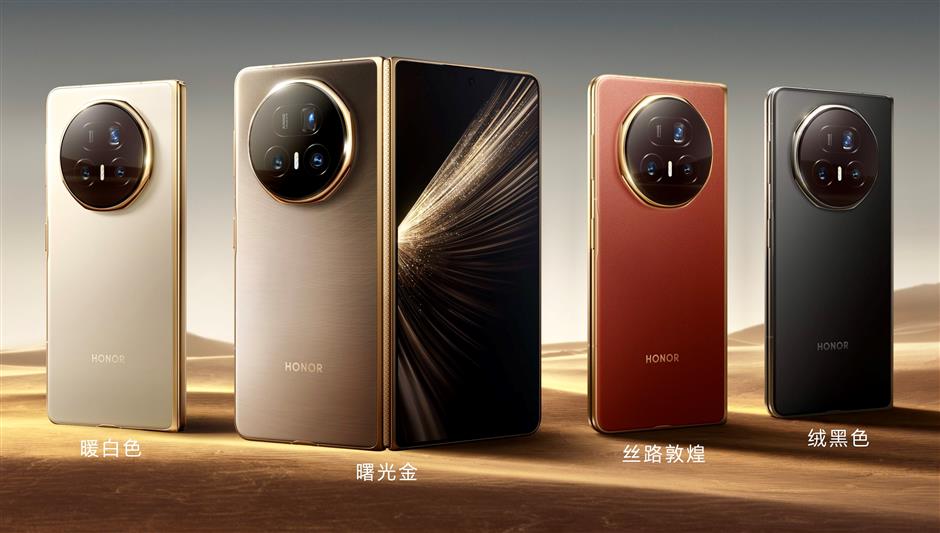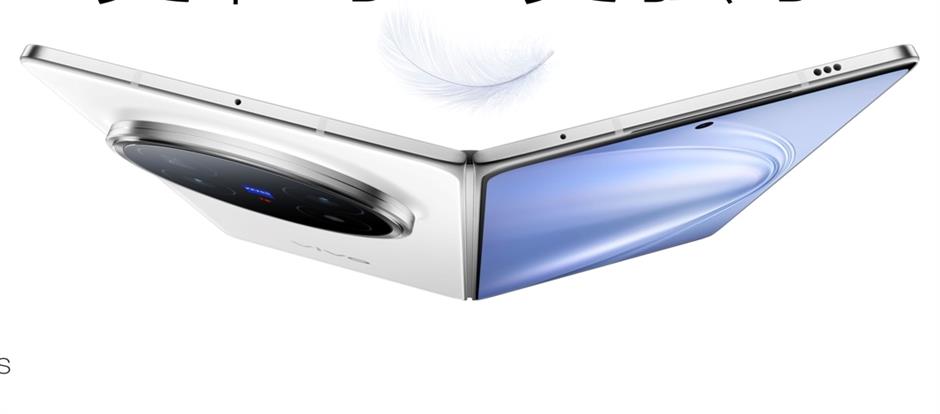

Honor has recently unveiled its Magic V5 foldable model, and CEO Li Jian called foldable the industry's "North Star."
The foldable smartphone is emerging as the latest hotly contested trend in a highly competitive market, with Apple reportedly poised to unveil its first foldable iPhone in 2026. Will it be a game-changer?
Major Android brands, including Samsung, Honor, Xiaomi and Vivo, have been aggressively upgrading their own foldable phone models in advance of that expected debut. Their focus has been on design, lightweight construction, battery life and artificial intelligence integration. Some are even exploring tri-fold screen technology.
Huawei, the market leader in China's foldable smartphone segment and a pioneer in tri-fold models, has already launched its Pocket foldable series.
"Foldable is the industry's North Star," said Li Jian, chief executive of Honor, which recently unveiled its Magic V5 foldable model.
According to the International Data Corp, China's foldable phone market sales surged 31 percent in 2024 to 9.2 million units, with Huawei, Honor and Vivo taking the top three positions.
IDC projects sales will exceed 10 million units this year and enter a "rapid growth" phase beginning next year – a timeframe that dovetails with Apple's possible foldable iPhone release.
While 10 million units would account for only about 3 percent of total smartphone sales, Android brands hold high hopes on the future of this segment.

Samsung has released new Galaxy Z Fold7 in China, touted as its "thinnest and lightest" fold model to date.
Android brands upgrade foldable phone models
Samsung, a global smartphone powerhouse, is actively testing the waters in the China market. Last week, it unveiled Galaxy Z Fold7, touted as its "thinnest and lightest" fold model to date. Samsung emphasizes that its foldable innovation seamlessly blends design and engineering with AI technology, calling it a "next chapter" in user experience.
The Galaxy Z Fold7 will be available in the domestic market since next Friday, with prices starting from 7,999 yuan (US$1,100). Samsung is also rumored to be planning to release a tri-fold screen model by the end of this year.
Honor launched its Magic V5 this month, challenging Samsung with its slim design and enhanced battery life. The release comes after Honor applied for an initial public offering on China's stock market.
Meanwhile, Vivo's new X Fold 5 claims the title of the world's lightest foldable smartphone at just 217 grams. The latest Vivo model features improvements in photography and battery capacity, and notably offers enhanced compatibility with Apple devices, including seamless functionality with the Apple Watch.

Vivo's new X Fold 5 claims the title of the world's lightest foldable smartphone at just 217 grams.
Is foldable iPhone a game-changer?
All eyes are now on Apple.
Tianfeng Securities analyst Ming-Chi Kuo, renowned for his insights into the iPhone supply chain, reported that Apple plans to launch its foldable iPhone in 2026. He said Apple has selected Samsung Display to provide foldable screen solutions, a move aimed at ensuring "stable mass production of the foldable iPhone in 2026."
Taiwan-based DigiTimes reported that the foldable iPhone has been undergoing prototype development since June. Taiwanese firms, including Foxconn, are expected to play crucial roles in the iPhone's supply chain.
UBS analysts project that Apple's new foldable iPhone will be priced between US$1,800 and US$2,000, exceeding the cost of the iPhone 16 series. Analysts, including Kuo, forecast it may generation sales of up to 20 million foldable phones in the next two to three years.
Apple typically has not commented on unannounced products.
However, questions remain whether Apple, as a latecomer, can secure a strong foothold in the foldable market. Several challenges could impede its success.
Firstly, Apple appears to be playing catch-up, apparently lacking core technological reserves for critical foldable components like screens, hinges and battery setups crucial for a foldable model's stability and flexibility. Chinese brands, in contrast, have developed multi-generational technologies for hinges and screens.

BOE displayed a tri-fold screen model in Shanghai, which can be used in various smartphone brands besides Huawei.
China's BOE Technology, the world's largest panel display vendor, recently showcased a tri-fold screen model in Shanghai, hinting at new customers beyond Huawei adopting its solutions. The iPhone's reliance on Samsung Display for the screen also presents an uncertainty for out-of-company technology, especially given Apple's recent struggles in AI development, even with a partner like OpenAI.
Secondly, the price point presents a hurdle, especially in China. Current domestic foldable models, featuring mature technologies and designs, are priced at roughly half of the projected US$1,800 cost of a foldable iPhone. This suggests that the first-generation foldable iPhone might not be particularly attractive in terms of value. It will be too expensive to qualify for subsidies under China's popular trade-in policy that encourages consumers to trade in old model goods for new.
Finally, the supply chain poses a challenge. Currently, and for the foreseeable future, most iPhone manufacturing and supply chain operations remain on the Chinese mainland. The foldable iPhone will likely rely on firms like Foxconn Industry Internet and Luxshare Precision Industry, both listed in the domestic markets.
Using technology and components from China could lead to tariff issues with the US, where President Donald Trump has threatened 25 percent tariffs on foreign-made phones and demanded Apple return its manufacturing to American shores. A clash could push the price of the new iPhone well over US$3,000 in the US.
It remains to be seen how Apple Chief Executive Tim Cook will navigate the complexities of tariff tensions

